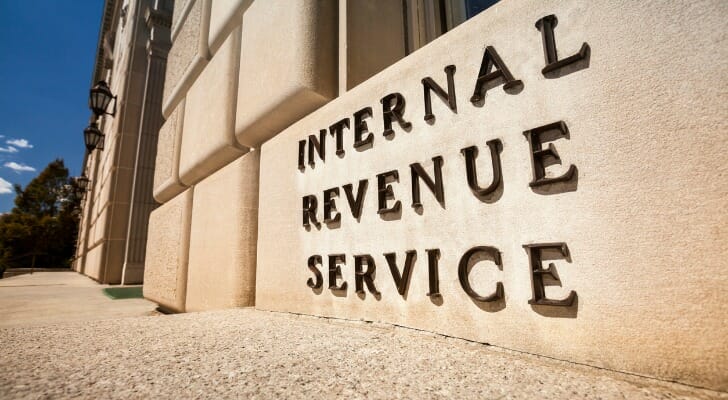When filing your taxes, it’s important to make sure you’re reporting all of your income correctly. That includes making note of early distributions from qualified retirement plans or other tax-favored accounts that may be subject to a 10% early withdrawal penalty. Failing to report those distributions could result in a major tax headache if the IRS determines you owe additional taxes or penalties later. In turn, if you’ve taken a withdrawal from an individual retirement account (IRA), 401(k) or another account with a tax-advantaged status, you may need to file IRS Form 5329 with your regular income tax return. If you need some hands-on advice as you navigate your retirement withdrawals, consider enlisting the help of a financial advisor.
What Is IRS Form 5329?
The official title for IRS Form 5329 is “Additional Taxes on Qualified Plans (including IRAs) and Other Tax-Favored Accounts.” It’s used by taxpayers who are under age 59.5 that have received a distribution from a qualified plan or similar account. The types of accounts covered by the form for distributions include:
- Qualified retirement plans (including IRAs)
- Coverdell Education Savings Accounts (ESAs)
- Qualified Tuition Programs (QTPS)
- ABLE Accounts
There are three reasons someone might need to file Form 5329. They go as follows:
- The first is to determine whether you owe the IRS a 10% early withdrawal penalty on early distributions from qualified retirement plans, ESAs, QTPs or ABLE accounts.
- The second is to determine whether you owe additional tax on excess contributions to traditional or Roth IRAs, Health Savings Accounts (HSAs), Coverdell ESAs, Archer MSAs or ABLE Accounts. Excess contributions are contributions above the annual limit allowed by the IRS. These contributions are subject to a 6% tax penalty for each year they remain in your account.
- The third is to determine whether you owe taxes or penalties for failing to take required minimum distributions (RMDs) from a qualified retirement plan. RMDs kick in for traditional 401(k)s and IRAs starting at age 70.5. Failing to take required minimum distributions on schedule can result in a steep tax penalty; the IRS can tax the amount not withdrawn at 50%.
Exceptions to Filing Form 5329

Ordinarily, you’d need to file Form 5329 if you take an early distribution from a qualified retirement plan before age 59.5, says Jacob Dayan, CEO and co-founder of Community Tax.
“If an individual takes money from their retirement account earlier than the age limit and it does not fall within the list of exceptions, then they are liable to face a 10% penalty and must file Form 5329,” Dayan says.
This 10% early withdrawal penalty applies on top of any income tax due on the withdrawal. Remember, traditional IRA and 401(k) contributions are made using pre-tax dollars.
However, you can avoid the additional early withdrawal penalty when an exception applies. The IRS offers a list of 12 scenarios in which a taxpayer would be able to take an early distribution from a retirement plan without triggering the penalty.
1. Total and Permanent Disability
Early distributions aren’t subject to the 10% penalty when you withdrew money because you’ve become totally and permanently disabled. You do have to be able to prove that a permanent and total disability exists to qualify for this exception.
2. Substantially Equal Periodic Payments
The Substantially Equal Periodic Payment rule allows you to avoid an early withdrawal penalty when taking distributions, regardless of age. To be eligible for this exception, you must receive substantially equal payments made at least annually for a minimum of five years or until you reach age 59.5, whichever comes later. The IRS offers three ways to determine the payment amount you can withdraw to avoid the penalty, based on your life expectancy.
3. Death
Early distributions taken due to the account owner’s death are not subject to the 10% early withdrawal penalty.
4. Separation From Service
Distributions from qualified retirement plans, excluding IRAs, won’t incur a penalty if you make the withdrawal after leaving from your employer in or after the year you reach age 55. This rule drops the age requirement to 50 for qualified public safety employees.
5. Unreimbursed Medical Expenses
You can avoid the early withdrawal penalty if you took money from a qualified retirement plan up to the amount you paid for unreimbursed medical expenses, minus 7.5% of your adjusted gross income (AGI) for the year.
6. Qualified Domestic Relations Order (QDRO)
If you got divorced and your retirement plan assets were divided between you and your ex-spouse under a QDRO, the 10% penalty wouldn’t apply to early distributions in that case. That only applies to employer plans, however, not IRAs.
7. Health Insurance Premiums
If you lose your job and you have to use your IRA assets to pay for ongoing health insurance premiums, you could claim an exception to the early withdrawal penalty. To qualify for the exception, you generally have to be receiving unemployment compensation for 12 consecutive weeks following a job loss.
8. Qualified Higher Education Expenses
Tapping your IRA to pay for college expenses for yourself or your child is another exception to the 10% penalty rule. There’s no limit on how much you can withdraw. However, the distribution must be paid to an eligible institution, meaning a college or university that’s eligible to participate in federal student aid programs. Distributions must also go towards paying for qualified higher education expenses, such as tuition and fees or room and board for students enrolled on at least a half-time basis.
9. First Home Purchase
Buying a first home is exciting and if you need cash for a down payment or closing costs, you could take it from your IRA. The IRS allows you to take up to $10,000 in early distributions towards the purchase of a first home without paying the early withdrawal penalty.
10. IRS Levy
Owing money to the IRS is no picnic and it’s always wise to pay off outstanding tax debts as quickly as possible to avoid taxes and penalties. If the IRS levies your retirement accounts to satisfy an unpaid tax debt, you wouldn’t be on the hook for any early withdrawal penalty.
11. Qualified Reservist Distributions
Qualified reservists aren’t subject to the early withdrawal penalty if they take an early distribution while serving on active duty for at least 180 days.
12. IRA Rollovers
Rolling over one retirement account to another generally doesn’t trigger the 10% penalty if the rollover happens in a timely manner. The rollover has to be final within 60 days to qualify for this exception.
What Happens If You Fail to File Form 5329?

If you took an early distribution from a retirement account, failed to take RMDs on time or you think you might have contributed too much money to a tax-favored plan, not filing Form 5329 isn’t an option.
“Failure to file the form will result in additional penalties from the IRS which no one wants to have to pay,” Dayan says.
For the 2022 tax year (which you’ll file in 2023), the form must filed by the standard deadline of April 18, 2023. If you don’t file by the deadline, the IRS applies a failure-to-file penalty of 5% of the unpaid taxes due for each month or part of a month your return is late. This penalty maxes out at 25% of your unpaid taxes.
If you’ve determined that you owe the tax penalty or income tax on an early distribution after completing Form 5329, you’ll need to pay those when you file. Otherwise, you’ll face the failure-to-pay penalty. The failure-to-pay penalty is half of 1% of your unpaid taxes and it starts accruing the day after the tax filing deadline.
Your best bet if you’re not sure how to complete Form 5329 or if you need to? “Don’t be afraid to seek a professional tax consultant as it can save you money and potential stress down the line,” Dayan says.
Bottom Line
Managing your retirement assets responsibly is incredibly important. There are many rules and regulations around taxes and withdrawals for these specialized accounts that you must follow, otherwise the IRS may take issue with you. That makes Form 5329 one of the most important tax forms you’ll have to file as a retiree.
Tips for Finding a Financial Advisor
- As you look for a tax pro, consider finding a financial advisor to work with as well. An advisor can help you evaluate your income, savings and investments to find opportunities to take advantage of tax breaks. Finding a qualified financial advisor doesn’t have to be hard. SmartAsset’s free tool matches you with up to three financial advisors who serve your area, and you can interview your advisor matches at no cost to decide which one is right for you. If you’re ready to find an advisor who can help you achieve your financial goals, get started now.
- When talking with an advisor, discuss how your current retirement plan strategy is working and whether you’re on track to meet your goals. They may have you run the numbers using a retirement calculator to help you to determine if you’re saving enough in tax-advantaged plans to build up your desired nest egg.
Photo credit: ©iStock.com/Tinpixels, ©iStock.com/designer491, ©iStock.com/Pgiam
